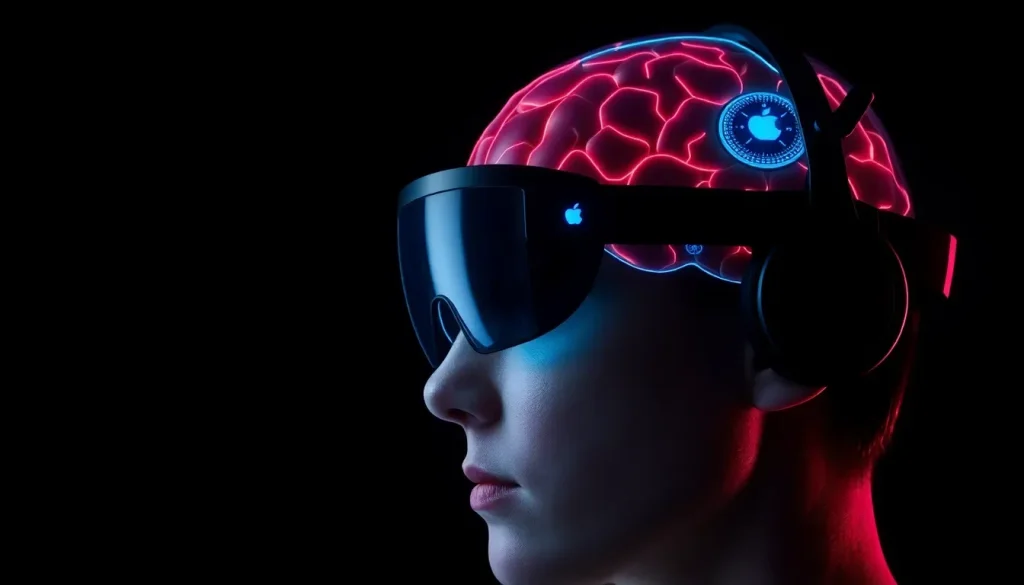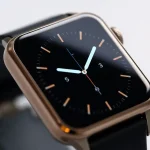Apple Vision Pro Enhances Accessibility with Brain-Computer Interfaces

Apple @ Work is exclusively brought to you by Mosyle, the only Apple Unified Platform. With Mosyle, organizations can seamlessly deploy, manage, and protect Apple devices, making it a trusted solution for over 45,000 organizations. Request your EXTENDED TRIAL today to discover why Mosyle is essential for working with Apple devices.
The Apple Vision Pro has generated considerable buzz since its launch, particularly regarding its applications in entertainment and productivity. However, its potential to revolutionize healthcare, especially for patients with severe disabilities, is becoming increasingly clear. A clinical study conducted by Cognixion is exploring how the device can facilitate communication for individuals living with conditions like ALS, spinal cord injuries, and stroke-related impairments through a blend of brain signals, eye tracking, and artificial intelligence (AI).
“Apple has set a global standard by making accessibility integral to every device, and Apple Vision Pro extends that commitment to spatial computing,” states Andreas Forsland, CEO of Cognixion. “By exploring how Cognixion’s non-invasive BCI technology and AI applications can work with Apple’s accessibility features, we hope to unlock new levels of independence and connection for people living with ALS, spinal cord injuries, stroke, and traumatic brain injuries.”
The study, which is scheduled to run until April 2026, will focus on individuals with ALS, spinal cord injuries, and speech impairments due to strokes. In the United States alone, over 14 million people suffer from neurological conditions that hinder their ability to communicate. Although the device used in this study is not yet FDA-cleared, the insights gained could significantly shape the future of accessibility technology and communication methods.
Exploring the potential of Apple Vision Pro in healthcare
The design and functionality of the Apple Vision Pro make it particularly suited for innovative applications in healthcare. With its high-resolution video passthrough capability, users can interact with their surroundings while utilizing digital overlays that facilitate communication. This augmented reality (AR) approach could prove more impactful in the long term than virtual reality (VR), as it allows for a seamless blend of the physical and digital worlds.
Cognixion, a company specializing in non-invasive brain-computer interfaces (BCI), utilizes its Nucleus technology, which captures electrical activity from the brain through an EEG headset. When integrated with Apple Vision Pro, these brain signals can be translated into commands or actions within the device's spatial computing environment. The accessibility framework embedded in Vision Pro plays a crucial role in this integration, enabling users with limited or no motor control to navigate and select items effortlessly.
- Eye Tracking: Allows users to control the interface using their gaze.
- Dwell Control: Enables interaction by simply looking at an item for a specified duration.
- AssistiveTouch: Facilitates touch-free interaction through gestures.
- Switch Control: Permits users to control the device using external switches.
These features create a more inclusive environment for those who may struggle with traditional input methods, underscoring Apple's long-standing commitment to accessibility. The advancements offered by Vision Pro reflect a broader understanding of how technology can transform the lives of individuals with disabilities.
Understanding the science behind Apple Vision Pro
The integration of advanced technology into the Apple Vision Pro is grounded in both neuroscience and computer science. The device's ability to interpret brain signals relies on sophisticated algorithms that process the data captured by the EEG headset. This process involves several stages:
- Signal Acquisition: The EEG headset picks up electrical signals generated by brain activity.
- Signal Processing: These signals are filtered and amplified to enhance clarity.
- Feature Extraction: Relevant features from the signals are identified for further analysis.
- Classification: The processed signals are interpreted to understand the user's intent.
Through this method, users can effectively communicate their thoughts and needs without physical interaction, marking a significant breakthrough in assistive technology. The future of this integration holds the potential for expansive applications beyond healthcare, paving the way for a more accessible digital world.
How Apple Vision Pro supports brain-computer interface technology
The collaboration between Apple Vision Pro and BCI developers like Cognixion exemplifies a new frontier in technology that prioritizes accessibility. While Apple did not design Vision Pro explicitly as a medical device, the robust accessibility framework within its operating system is enabling groundbreaking medical research.
As researchers and developers explore the possibilities of combining Apple’s hardware capabilities with BCI technology, they are discovering innovative ways to enhance communication for those with limited mobility. The Vision Pro’s capabilities support various features that streamline the user experience:
- Intuitive user interface that adapts to the user's needs.
- Real-time signal processing that minimizes latency.
- Seamless integration with existing Apple ecosystems, facilitating user familiarity.
This synergy between hardware and software not only enhances the user experience but also accelerates the pace of research and development in assistive technologies.
How to access accessibility features on Apple Vision Pro
Accessing the accessibility features on Apple Vision Pro is designed to be straightforward, ensuring that users can quickly adapt the device to suit their individual needs. To find these features, users can follow these steps:
- Open the Settings app on the Vision Pro device.
- Select the option labeled “Accessibility.”
- Explore the various accessibility features available, such as VoiceOver, Magnifier, and AssistiveTouch.
By customizing these settings, users can tailor their experience to maximize comfort and efficiency, illustrating Apple's commitment to inclusivity. Moreover, the ongoing development of these features reflects a broader understanding of diverse user needs.
For an insightful perspective on the impact of Apple Vision Pro in real-world scenarios, consider watching this video:
Looking ahead: The future of accessibility technology
The ongoing collaboration between Apple and Cognixion represents the beginning of a significant transformation in how technology interacts with human capabilities. As the clinical study progresses, the findings will likely contribute to a deeper understanding of how accessibility technology can evolve and improve lives.
Apple’s approach to integrating accessibility into its products has always been about more than compliance; it’s about fostering an inclusive environment where technology can empower users. The future may reveal:
- Enhanced communication tools that facilitate real-time interactions.
- Innovative applications that redefine how we engage with technology.
- Broader adoption of BCI technology across various fields, from healthcare to education.
As we look to the future, it's essential to recognize that technological advancements in accessibility will continue to shape the landscape of communication and interaction, making it necessary for companies to prioritize inclusivity as a core value.



Leave a Reply